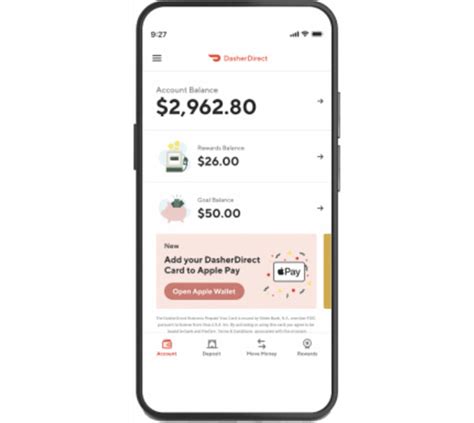Dasher.

Dasher is a revolutionary text input technology that has gained significant attention in the field of human-computer interaction. Developed with the aim of providing an efficient and intuitive text entry method, Dasher offers a unique approach to typing on digital devices. This article will delve into the intricacies of Dasher, exploring its history, functionality, benefits, and potential future impact on various industries.
The Evolution of Dasher

Dasher’s journey began in the early 2000s when a team of researchers, led by Professor David J. C. MacKay, set out to create a novel text input system. The primary motivation behind Dasher’s development was to address the limitations of traditional keyboard and touchscreen interfaces, especially for individuals with motor impairments or those seeking a more efficient way to input text.
The initial concept for Dasher was inspired by the idea of using predictive modeling and a dynamic interface to enable users to input text with minimal physical effort. Over the years, the Dasher project has undergone extensive research and development, resulting in a highly sophisticated and user-friendly text input tool.
How Dasher Works: A Technical Overview

At its core, Dasher employs a combination of predictive text and a unique graphical user interface. The system operates by presenting the user with a series of symbols, letters, or words on a screen, which are arranged in a grid-like pattern. Each symbol is associated with a specific direction on the screen, and users navigate through these symbols by making directional movements with a mouse, trackpad, or other input devices.
As the user moves in a particular direction, Dasher predicts the intended symbol or word and highlights it accordingly. The system continuously updates its predictions based on the user's input, making it highly adaptive and context-aware. This predictive capability is powered by sophisticated machine learning algorithms, which analyze the user's typing patterns and language usage to offer accurate suggestions.
One of the key advantages of Dasher is its ability to accommodate various input devices and physical abilities. Whether a user has limited mobility or prefers alternative input methods, Dasher's flexible design allows for a range of interaction possibilities. Additionally, the system's visual interface provides a clear and intuitive feedback loop, making it accessible to a wide audience.
Benefits and Applications of Dasher
Dasher’s innovative approach to text input offers several benefits that have the potential to revolutionize how we interact with digital devices.
Enhanced Accessibility
One of the most significant advantages of Dasher is its potential to improve accessibility for individuals with physical disabilities or motor impairments. Traditional keyboard and touchscreen interfaces can be challenging for those with limited dexterity or mobility. Dasher’s directional navigation system offers an alternative that requires minimal physical effort, making it an ideal solution for inclusive design.
| Input Method | Effort Required |
|---|---|
| Traditional Keyboard | High - Requires precise finger movements |
| Touchscreen | Moderate - Depends on finger/stylus precision |
| Dasher | Low - Minimal physical effort needed |

By reducing the physical demands of text input, Dasher opens up new possibilities for individuals with disabilities, allowing them to communicate and interact with digital technologies more easily.
Increased Efficiency
Dasher’s predictive capabilities and dynamic interface design result in faster text input compared to traditional methods. Users can achieve higher typing speeds with Dasher, as the system learns their writing style and adapts its predictions accordingly. This increased efficiency can be particularly beneficial in time-sensitive situations, such as note-taking during lectures or rapid communication in emergency response scenarios.
Additionally, Dasher's efficiency extends beyond just speed. The system's ability to learn and adapt means that users can often input text with fewer keystrokes or directional movements, reducing the cognitive load and fatigue associated with prolonged text input tasks.
Applications Across Industries
The potential applications of Dasher are vast and extend across various industries and domains. Here are a few notable examples:
- Healthcare: Dasher can assist healthcare professionals in quickly and accurately documenting patient information, prescriptions, and medical notes. Its accessibility features make it ideal for use by medical staff with physical limitations or those who need to input data while on the move.
- Education: Students and educators can benefit from Dasher's efficiency and accessibility. It can facilitate faster note-taking during lectures, enhance online learning experiences, and provide an inclusive text input method for students with disabilities.
- Customer Service: Dasher's ability to adapt to different input devices makes it suitable for customer service representatives who often rely on multiple tools to communicate with customers. It can streamline the process of drafting emails, chats, or support tickets.
- Research and Development: Researchers and developers can leverage Dasher's predictive capabilities to enhance their coding, documentation, and data analysis workflows. The system's adaptability and efficiency can boost productivity in these knowledge-intensive fields.
Dasher’s Impact on the Future
As Dasher continues to evolve and gain traction, its impact on the future of human-computer interaction and accessibility is undeniable. Here are some potential future implications of this innovative technology:
Widespread Adoption
With its unique combination of accessibility, efficiency, and adaptability, Dasher has the potential to become a mainstream text input method. As more users experience the benefits of Dasher, it may gradually replace traditional keyboards and touchscreens as the primary means of text input on digital devices.
Integration with Virtual and Augmented Reality
The immersive nature of virtual and augmented reality (VR/AR) technologies presents an exciting opportunity for Dasher. By integrating Dasher’s predictive text input system into VR/AR environments, users can seamlessly interact with digital content and communicate within these virtual spaces. This integration could revolutionize how we communicate and collaborate in virtual settings.
Personalized User Experience
Dasher’s machine learning algorithms can be further refined to offer personalized text input experiences. By analyzing individual typing patterns, language preferences, and user feedback, Dasher could adapt its predictions and interface to cater to each user’s unique needs. This level of personalization could enhance user satisfaction and engagement with digital devices.
Expanding Accessibility Standards
Dasher’s success in improving accessibility for individuals with disabilities could drive the adoption of similar technologies across industries. As more organizations recognize the benefits of inclusive design, Dasher may serve as a catalyst for the development and integration of accessible text input methods in various digital applications and services.
FAQs
Is Dasher suitable for users with visual impairments?
+While Dasher was primarily designed for users with motor impairments, its visual interface can also be adapted for individuals with visual impairments. By incorporating screen readers and alternative input methods, Dasher can provide an accessible text input solution for this user group.
Can Dasher be used on mobile devices?
+Yes, Dasher has been optimized for mobile devices and can be accessed through various apps and web-based interfaces. Its flexibility and adaptability make it well-suited for touchscreen devices, offering an efficient and accessible text input method on the go.
What languages does Dasher support?
+Dasher currently supports multiple languages, including English, French, German, and Spanish. The system’s language capabilities are continuously being expanded, and users can contribute to language development by providing feedback and suggestions.
Dasher represents a significant advancement in the field of human-computer interaction, offering an innovative and accessible approach to text input. Its potential to revolutionize how we interact with digital devices, particularly for individuals with disabilities, is immense. As Dasher continues to evolve and gain recognition, it will undoubtedly shape the future of text input and accessibility across various industries.



